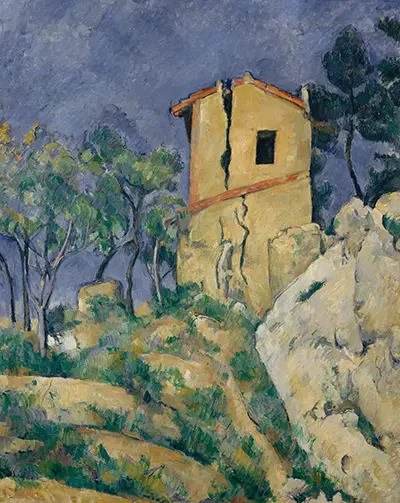The House with the Cracked Walls is a marvelous art piece by renowned French painter, lithographer and engraver Paul Cezanne.
The original painting is on view in New York City at The Metropolitan Museum of Art of, the largest art museum in the United States. Paul Cezanne’s drew most of his paintings in his home town in Aix province. In this painting, The House with the Cracked Walls, Paul Cezanne attempted to explore the genre of landscape art, which turned out to be perfect. The painting is dated between 1892 and 1894. Paul Cezanne used oil on canvas medium, which was a common technique of painting during 19th century post-Impressionism. Its original dimensions were 31.5 by 25.25 inches (80 by 64.1 centimeters).
Cezanne regularly did his paintings of abandoned sites in his studio located outside Aix. Cezanne showcases his mastery of craftsmanship, color, composition and design in this artwork. Meyer Schapiro sees this painting as romantic in nature. The art features a house with disturbing cracks on a rugged hill. The artwork’s general verticality and the tilted ground without lines to show perspective gives the feeling of a strange world. The trees on the uphill side are darker similar to the cracks on the upper section of the house. The ominous cracks reappear in many forms in the landscape such as the markings in the ground, and tree trunks.
The sky seems to be overcast probably with dark clouds or evening sky and prevents the observer from seeing further and directing the attention to the immediate environment. The painting combines a level of intimacy, restlessness and strain. It feels and gives a perception of quietness and gloominess when observed. The house is on the verge of collapsing but held together by brown ribbon like structure. The trees on both sides seem to be pulling the house apart.
The house is also supported on one side by earth and on the other by a rock. The details in this painting create a sense of conflict since the house looks divided into two parts. Each apart is attached and connected to a unique environment. The painting showcases Cezanne's method of using repetitive, exploratory and sensitive brushstrokes that combine create complex structures. The details in capturing various elements in the painting are outstanding and further relays Cezanne’s ability to study his environment while dealing with the complexity that comes with human perception through vision. Through his art, Cezanne challenges the way other artists' view of the world.




